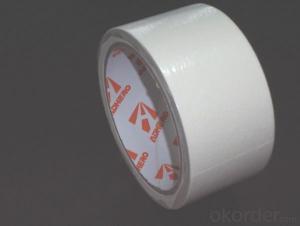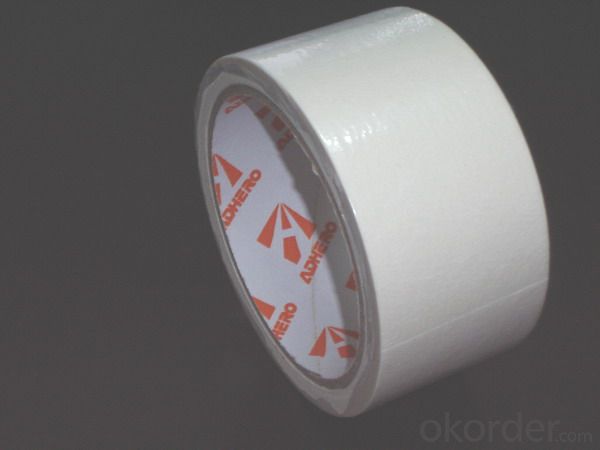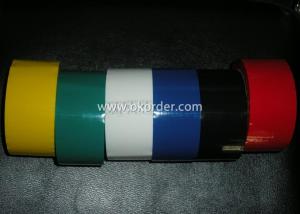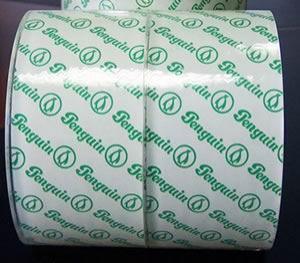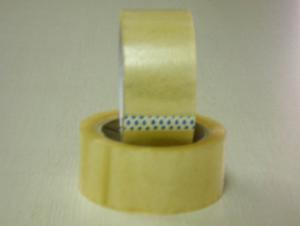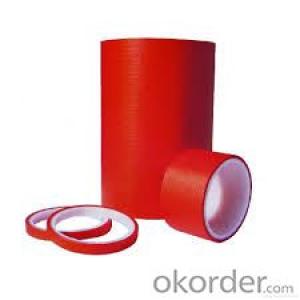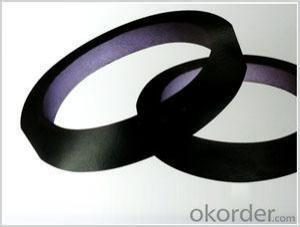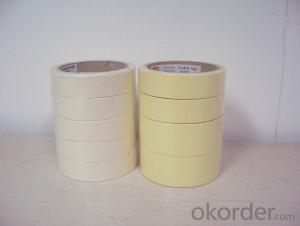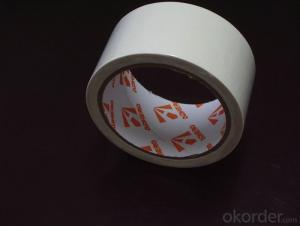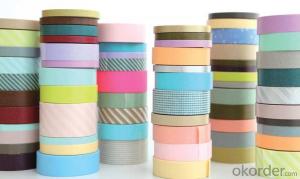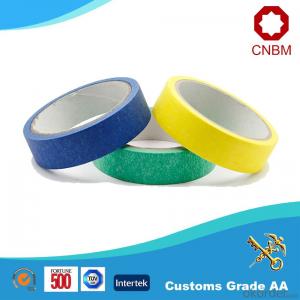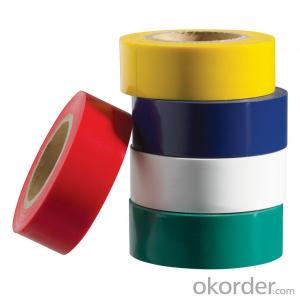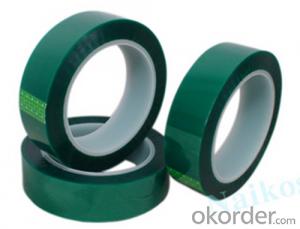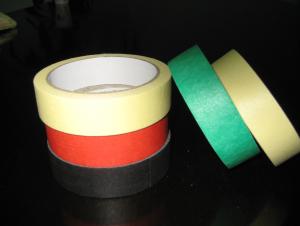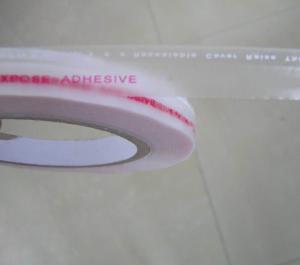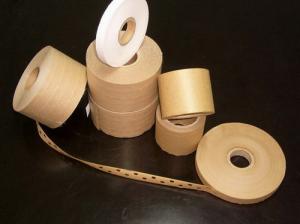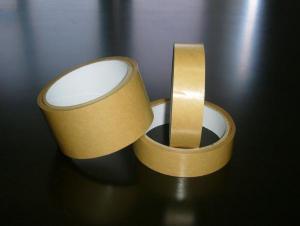Natural Rubber Adhesive Masking Tape with Clear Acrylic Tape Packaging
- Loading Port:
- Fuzhou
- Payment Terms:
- TT OR LC
- Min Order Qty:
- 900 roll
- Supply Capability:
- 20000 roll/month
OKorder Service Pledge
OKorder Financial Service
You Might Also Like
Introduction of Masking Tape
Masking tapes are made of paper coated with acrylic adhesive or rubber based adhesive.
Application of Masking Tape
Interior paint masking, silk screening, Light duty packaging, bundling, holding, splicing &Tabbing, and other non-critical applications where a pressure-sensitive tape is needed.
Advantage of Masking Tape
1.Masking tape, superb tack and adhesion to surface, Strong grip that is ensured because of an excellent adhesive backing.
2. Peak performance even under extreme conditions of pressure and temperature, which can stick to all types of surfaces.
3. Consistent quality
4. on time delivery
5. Effective and timely communication
6. Competitive price
Packing of Masking Tape
Jumbo rolls & log rolls: Packed with kraft paper and stretch wrap film, with or without pallet
Cut rolls: Shrink package, placed in cartons, with or without pallet
Jumbo rolls & log rolls: Packed with kraft paper and stretch wrap film, with or without pallet
Size of Masking Tape
Paper Core ID: 76mm
Jumbo size: 0.99m x 1800m, 1.22m x 1800m, 1.51m x 1800m
Cut roll size: As per customer's requirement
Cut rolls: Shrink package, placed in cartons, with or without pallet
Pictures of Masking Tape
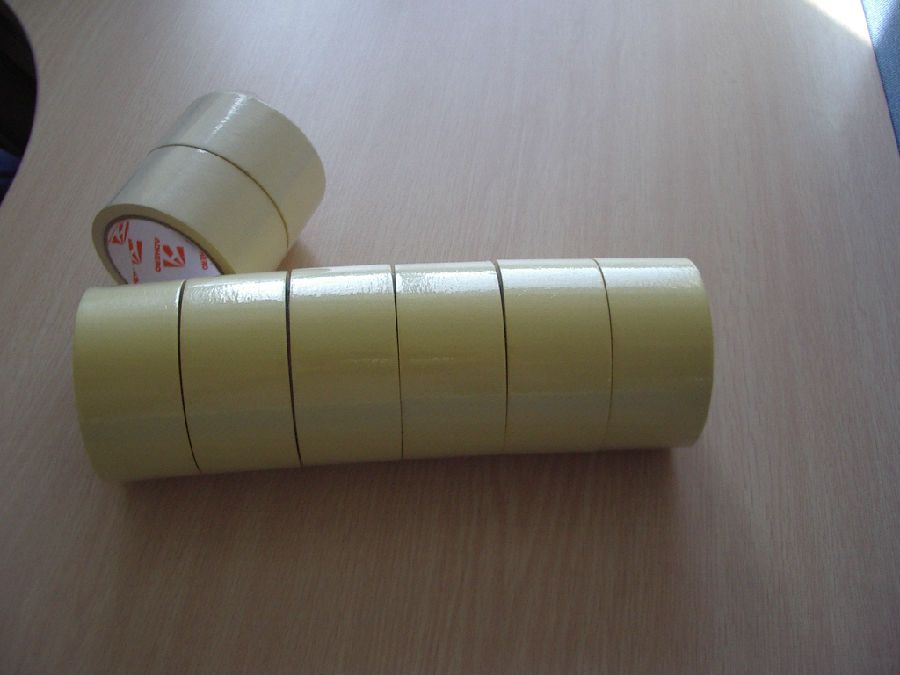
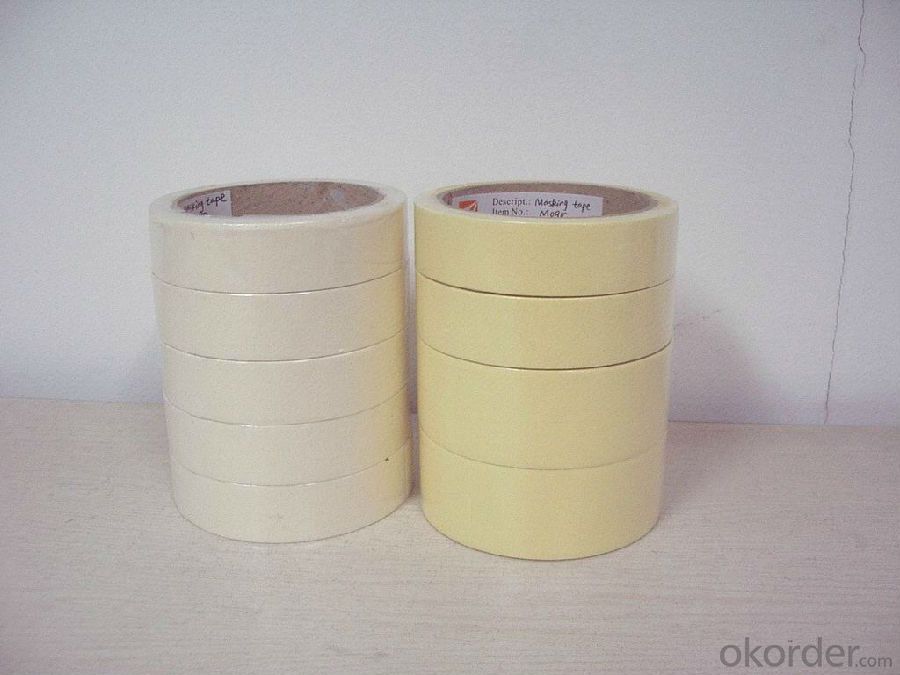
Specification of Masking Tape
| Material | Masking tape |
| Adhesive Side | Single Sided. |
| Adhesive | Rubber based acrylic adhesive |
| Acrylic | Rubber |
| Color | White/yellow/black/orange /brown/blue/red/ green |
| Normal thickness | 150mic, 160mic, 170mic, 180mic, 190mic, 200mic |
| Packaging | Single packed, shrink film packed, depend on customer’s request |
Remarks:
1. The data above are typical results and subject to change without notice.
2. Tolerance: Weight and Thickness: ±10%; Width: ±3mm;
Length: Cut Roll & Log Roll ±0.3m, Jumbo Roll ±0.5%.
3. The products should be stored at room temperature and kept from wet and heat source.
4. It is essential, as with all pressure-sensitive tapes, that the surface to which the tape is applied must be clean, dry, and free of grease and oil.
5. The user should take test and do trial-application on the above products before coming into application so as to witness and ensure suitability for user’s special purpose and technique.
FAQ
1. What is the range of your products?
So far, we manufacture various kinds of double sided adhesive tape, masking tape, kraft tape and BOPP packing tape. To better meet your needs, we can also source other adhesive tapes for you if it is appropriate to do so.
2. What's the lead time for delivery?
We ensure you a prompt delivery of the goods. We do not stock any of the goods. The production cycle time of 1*20FCL is 2-3 weeks.
3. How many carriers does your double sided adhesive tapes have?
There are many carriers that our double sided adhesive tapes based on, which are tissue, PET, BOPP, PE foam, EVA foam.
4.Can you accept the cooperation way of OEM?
Upon receipt of formal authorization, we can accept OEM processing.
- Q: Can packaging tape be used for sealing plastic tubing?
- Packaging tape has the capability to seal plastic tubing. Its design ensures a robust and reliable seal on different surfaces, including plastic materials. Nonetheless, it is crucial to take into account the particular purpose and demands of the plastic tubing. In instances where the tubing is intended for containing pressurized liquids or gases, or if it necessitates a long-lasting and resilient seal, specialized techniques like heat sealing or specific adhesives formulated for plastic materials might be more suitable. Ultimately, the appropriateness of packaging tape for sealing plastic tubing relies on the specific situation and requirements of the application.
- Q: Has anyone done a tape cut? What about profit?
- This saying is very reasonable, generally 2.5 square even high profits, sometimes with packing, a tape can earn 3 dollars a day, at least to go more than 300 pieces of goods to be profitable, or than dealers, my home is tape cutting
- Q: What are the benefits of using double-sided packaging tape?
- Using double-sided packaging tape has several advantages. Firstly, it ensures a strong and secure bond between surfaces, making it perfect for packaging applications where contents need to stay in place during transit or storage. The tape creates a powerful adhesive bond, reducing the risk of items shifting or becoming damaged. Secondly, double-sided packaging tape is versatile and can be used for various purposes. It can seal boxes, attach labels or documents, and even mount lightweight objects. This versatility makes it valuable for personal and professional packaging needs. Additionally, double-sided packaging tape is easy to use. Unlike traditional tapes that require adhesive to be applied on both surfaces, double-sided tape already has adhesive on both sides, making it a convenient option. Simply peel off the backing and apply the tape to the desired surface, saving time and effort. Moreover, double-sided packaging tape provides a neat and clean appearance. As it is hidden between bonded surfaces, it creates a seamless look without any visible tape lines. This is especially useful when packaging gifts or products that require a professional and presentable appearance. Lastly, double-sided packaging tape is designed to be durable and long-lasting. It can withstand various environmental conditions, such as temperature changes, humidity, and exposure to moisture, without losing its adhesive properties. This ensures that your packaging remains intact and secure for an extended period of time. In conclusion, the benefits of using double-sided packaging tape include strong adhesion, versatility, ease of use, a clean appearance, and durability. Whether you are packaging items for personal or professional purposes, double-sided packaging tape provides a reliable and efficient solution.
- Q: Can packaging tape be used for sealing packages with fragile artwork or sculptures?
- Yes, packaging tape can be used for sealing packages with fragile artwork or sculptures. However, it is recommended to use additional protective materials such as bubble wrap or foam to provide cushioning and ensure the safe transportation of delicate items.
- Q: Can packaging tape be used for sealing plastic folders?
- Yes, packaging tape can be used for sealing plastic folders. Packaging tape is designed to be strong and adhesive, making it suitable for securing and sealing various materials including plastic folders. It can help keep the contents of the folder secure and protected. However, it is important to ensure that the tape is applied properly and securely to ensure a tight seal. Additionally, it is recommended to use a clear packaging tape that will not obstruct the visibility of the folder's contents.
- Q: Transparent sealing tape 48mm*60y what do you mean?
- 48mm is the width of the tape; 60y is the number of turns
- Q: What's the ingredient of 610#3m tape?
- 4.2 will ring out from the paint on the surface of the Jie Dao 1/16 "11 parallel lines and vertical ring into the same 11 parallel lines (to quit the paint coating does not hurt the rubber parts as the standard).4.3 test tape affixed to the notch surface (tape ends should be long out scored 1/2 "long, so a finger pressing tape), the internal air and keep no / 90 + 30 seconds.4.4 pull the adhesive tape 180 degrees parallel to the surface of the paint coating.5. judgment:5.1, over 10% of the oil drain is a serious problem.5.2, no grid number, since 5% is a general problem.
- Q: Is the insulating tape waterproof?
- There are special waterproof adhesive tape and insulating tape. It's not the same.General electrician work when two are used.Black wove feeling is insulated
- Q: Does packaging tape come in different materials for specific applications?
- Yes, packaging tape does come in different materials for specific applications. These materials include polypropylene, PVC, paper, and filament tape. Each material has unique properties that make it suitable for various purposes such as sealing lightweight packages, securing heavy boxes, or providing extra strength and tear resistance.
- Q: Is packaging tape safe to use on plastic hangers?
- Packaging tape is generally safe for use on plastic hangers, as it is designed to securely hold items together and can adhere well to various surfaces, including plastic. However, it is important to take into account the type of plastic hanger and its intended purpose. While packaging tape may be suitable for temporarily securing clothes on a plastic hanger, it could potentially leave residue or cause damage if left for an extended period. It is recommended to test a small area of the hanger first to ensure that the tape does not cause any harm or leave marks. Moreover, if the plastic hanger is used for displaying or storing delicate or valuable clothing, it might be better to consider gentle alternatives such as fabric-friendly tape or non-adhesive hanger attachments.
Send your message to us
Natural Rubber Adhesive Masking Tape with Clear Acrylic Tape Packaging
- Loading Port:
- Fuzhou
- Payment Terms:
- TT OR LC
- Min Order Qty:
- 900 roll
- Supply Capability:
- 20000 roll/month
OKorder Service Pledge
OKorder Financial Service
Similar products
Hot products
Hot Searches

